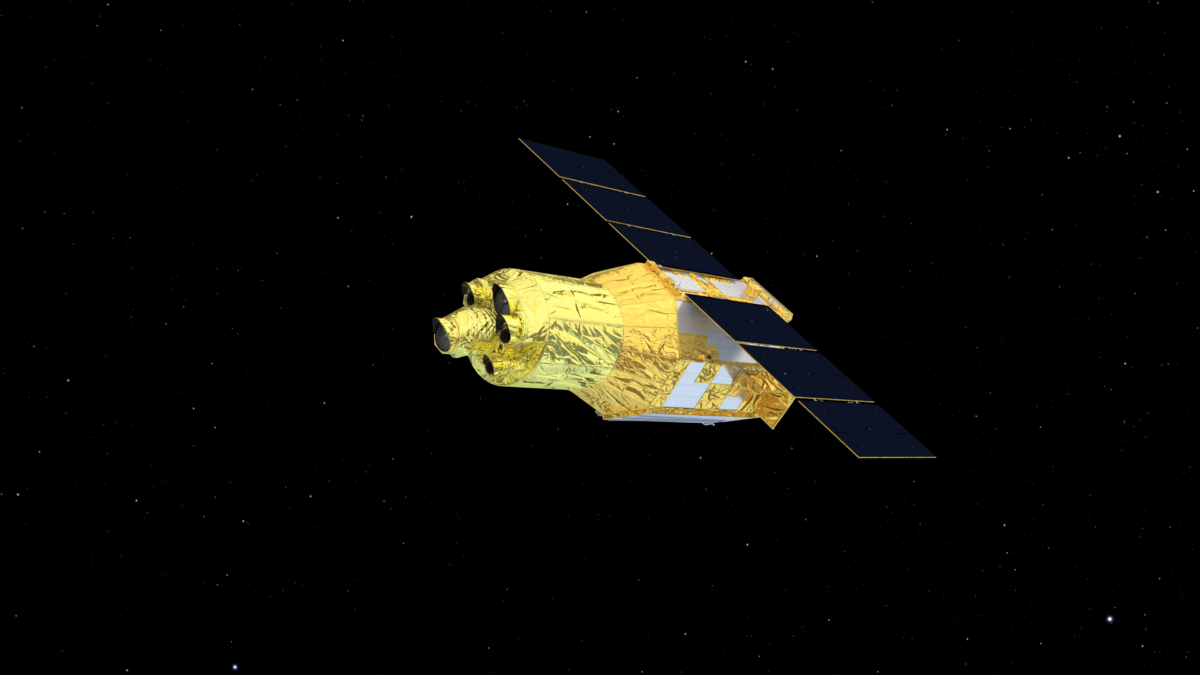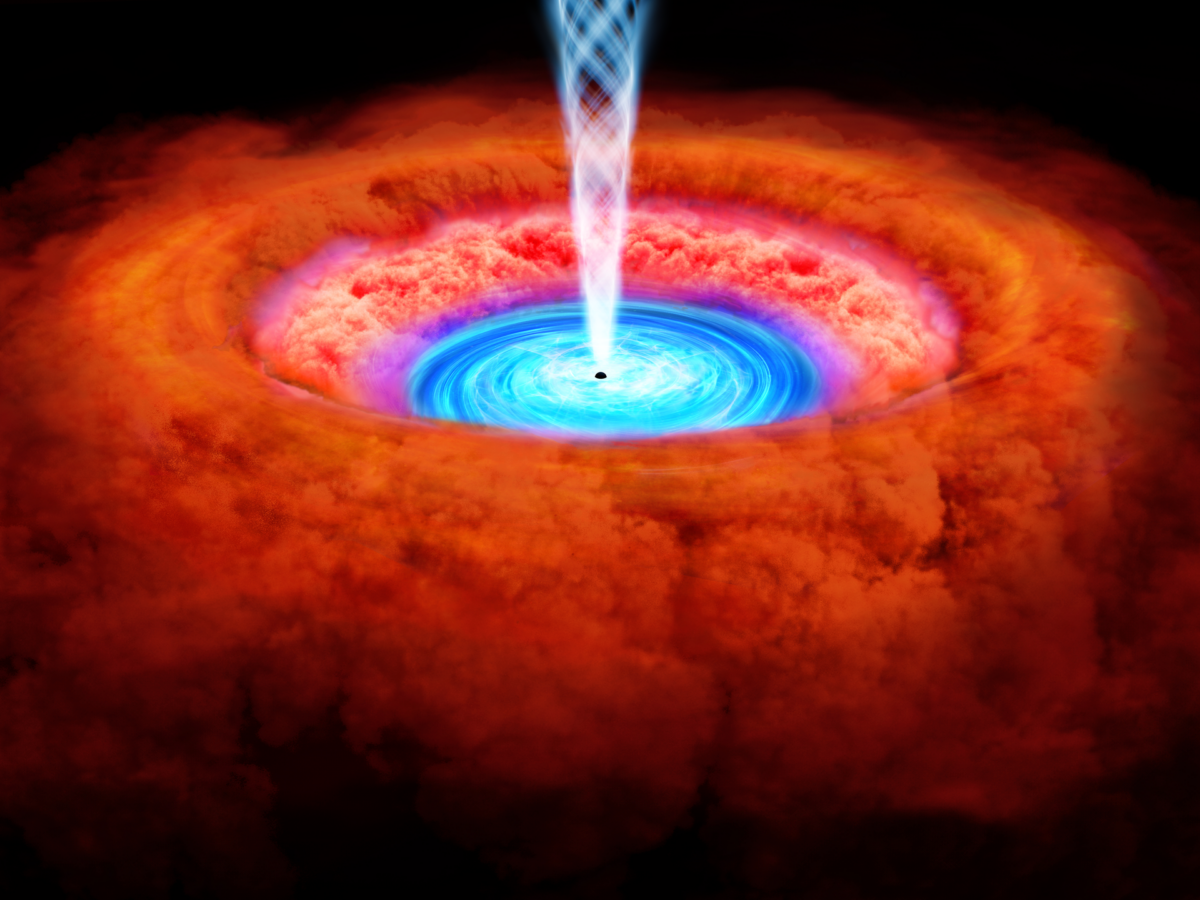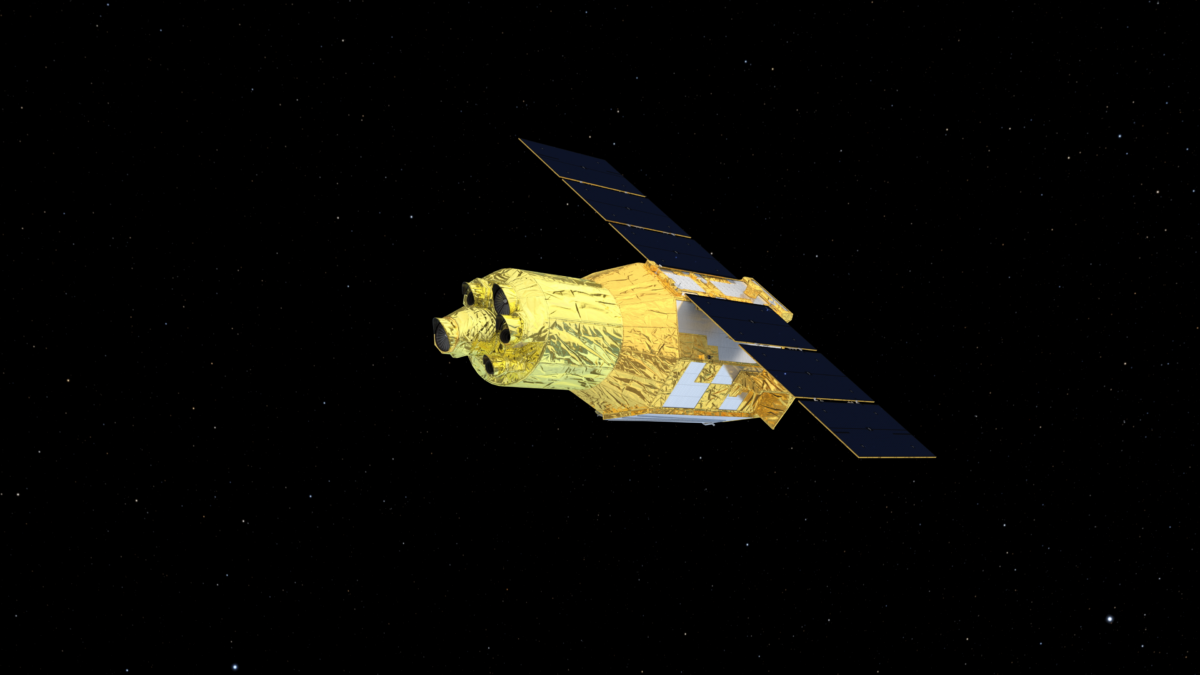The latest X-ray observatory found a warped black hole disk and a supernova spewing iron — and it’s just getting started.

XRISM’s X-ray mirrors and star trackers are mounted to the craft’s front (at left), as shown in this rendering. Credit: NASA’s Goddard Space Flight Center Conceptual Image Lab
The X-Ray Imaging and Spectroscopy Mission (XRISM) isn’t the first of its kind, but the state-of-the-art spectroscopic instruments onboard have opened new doors for high-energy astrophysics.
Active galactic nuclei (AGN) — supermassive black holes that actively gobble material and shine brightly in the resulting chaos — have always held mysteries for astrophysicists. Now, a year after XRISM’s launch in September 2023, its first results have revealed key findings about an AGN’s structure and traced a supernova remnant by imaging the flow of nearby superheated iron atoms. The results come from XRISM’s commissioning phase, to test — and showcase — the abilities of the new orbiting observatory. More than 100 international researchers investigated XRISM’s data to produce the results of two new studies.
“It is truly exciting that we are able to gather X-ray spectra with such unprecedented high resolution, particularly for the hottest plasmas in the universe,” said Lia Corrales, co-author of both XRISM publications and an astronomer at the University of Michigan in Ann Arbor, in a press release.
Top of the resolution food chain
XRISM was built through a collaboration between the Japanese Aerospace Exploration Agency (JAXA) and NASA, with participation from the European Space Agency (ESA), and is meant to function in concert with its predecessors such as the XMM-Newton X-ray Telescope and the Chandra X-ray Observatory.
The new observatory uses two instruments, including Xtend, an imager focusing on the soft X-ray end of the spectrum. But researchers are most excited about Resolve, a spectroscopy tool with a twist: it’s a microcalorimeter that measures not the X-rays as they enter the instrument, but how much they warm the small detector when they strike it. The incredible sensitivity of this setup gives Resolve unprecedented spectral resolution, justifying its name and yielding highly detailed spectra with which to analyze XRISM’s targets.
“Resolve will allow us to see the shapes of these [spectral] lines in a way never possible before,” said Brian Williams, a XRISM project scientist at NASA’s Goddard Space Flight Center, in a press release earlier this year, “letting us determine not only the abundances of the various elements present, but also their temperatures, densities, and directions of motion at unprecedented levels of precision.”
XRISM ruling with an iron fist
To test the new telescope’s mettle, the power of Resolve was brought to bear upon a supernova remnant in the Large Magellanic Cloud called N132D, whose massive originator star collapsed in a supernova explosion about 3,000 years ago, leaving behind a hot bubble of gas in the interstellar medium. During the supernova, iron was released and heated to a staggering temperature of 18 billion degrees Fahrenheit (10 billion degrees Celsius). The study has been accepted for publication in the Publications of the Astronomical Society of Japan.
At this temperature, XRISM easily traced the iron elements and revealed that the shape of SNR N132D is not the expected spherical bubble, but instead, is torus- or donut-shaped. Additionally, XRISM yielded information about the speed and direction of the hot plasma; the research team was able to measure the speed and found that the torus is expanding at a rate of 2.7 million mph (4.3 million km/h).
“These new observations … showcase the mission’s exceptional capability in exploring the high-energy universe,” said ESA XRISM Project Scientist Matteo Guainazzi in a press release.

Bent black hole
Another early release study is also based on XRISM’s first-look data and exposed secrets behind the AGN at the heart of spiral galaxy NGC 4151. The supermassive black hole weighs 30 million solar masses and is located about 62 million light-years away.
Prior radio and infrared observations had already shown that the accretion disk surrounding the supermassive black hole is also torus-shaped, as well as the material within the disk. However, with the advanced spectroscopic tools on XRISM, researchers can now trace the distribution of plasma orbiting and falling into the black hole.
The iron elements within the AGN are the key ingredients for this and future studies to map out the structure of the accretion disk.
“Resolve is allowing us to characterize the multi-structured and multi-temperature environment of SMBHs in a way that was not possible before,” said Corrales.
XRISM is only now beginning its General Observer (GO) phase, when scientists worldwide can submit targets and study the results. The next few years will see a whole new X-ray universe open up for understanding.



